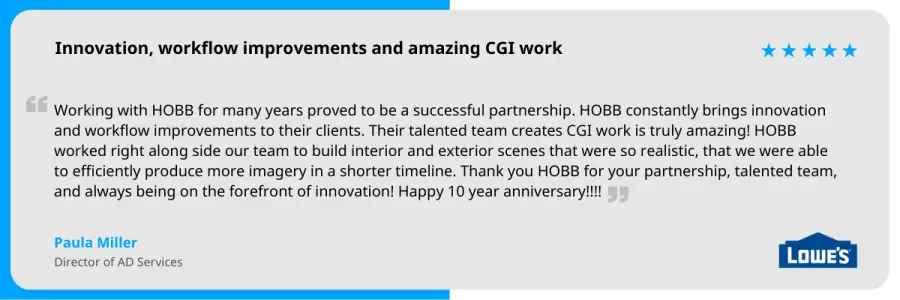If you’re starting an eCommerce shop, you know that product images are the lifeblood of your business. They can make or break a sale, so you want to ensure that you’re putting your best foot forward.
But with so many options available, it can be challenging to know where to start. CGI and traditional photography are two primary options with pros and cons.
In this blog post, we’ll explore the key differences between CGI and traditional photography and the unique benefits each has to offer.
Today, businesses face an ever-increasing challenge to capture the attention of their target audience.
CGI and photography are powerful marketing tools that can help your product get noticed in a sea of competitors and give your business a competitive edge.
While traditional photography has long been a staple for marketing and advertising, CGI has emerged as a powerful alternative. The debate between CGI and photography continues to heat up, with both sides claiming to offer unique advantages.
On the one hand, photography provides a sense of authenticity and real-world tangibility, while, on the other, CGI can create stunningly realistic and dynamic visuals that push the boundaries of imagination.
So, which one should you choose? Join us as we explore the distinctions of CGI versus photography and provide some insights into how to leverage each one to create impactful and memorable visuals for your brand.
What Is CGI (Computer Generated Imagery)?
There are two main methods to create realistic and engaging visuals in visual content creation: CGI (Computer Generated Imagery) and Photography. While photography has been a long-standing medium for capturing images, CGI has become increasingly popular due to its ability to create highly detailed, customizable, and realistic images.
You must be wondering what makes CGI popular and a better choice!
CGI can be used to create white background images, 360 product spins or 360 photography, lifestyle images or contextual images, inspirational images, videos, product animations, product films and also forms the base for virtual and augmented reality applications that can be used as effective buying experiences for end consumers using computer software. The process involves 3D modeling and rendering software to create a virtual environment, products, third party props and rendering them into all forms of content.
It enables realistic, highly detailed, and accurate visual content that can be used by marketers for various purposes, including eCommerce product pages, listing pages, social media content, signage, print, advertising, how-to videos, installation videos, product functionality animations, product films, and new age consumer experiences.
The use of computer generated imagery (CGI) in visual content creation has proliferated over the years, and for good reason. CGI has many advantages over traditional photography, making it a popular choice for brands and businesses.
Overall, the advantages of CGI in visual content creation make it an attractive option for many brands and businesses. The level of control and flexibility it offers, combined with the ability to create photorealistic images and cost and time savings, make it a powerful tool for visual content creation.
On the other hand, photography is a well-established medium used for centuries to capture real-life moments and events. It is often used for marketing, advertising, and showing products on websites and product catalogs. It involves capturing images using a camera, which can then be edited and manipulated using image editing software.
When comparing CGI to photography, there are several factors to consider, including the quality of the final product, the level of detail, the cost and time efficiency, and the level of control and customization.
These methods come with their strengths and weaknesses, and the choice between the two often depends on what are your project specifications.
Comparison – CGI vs Traditional Photography
1. Cost Efficiency: CGI Comes At A Fraction Of The Cost Of Traditional Photography
CGI eliminates the need for expensive location shoots, which is a high cost for traditional photography.
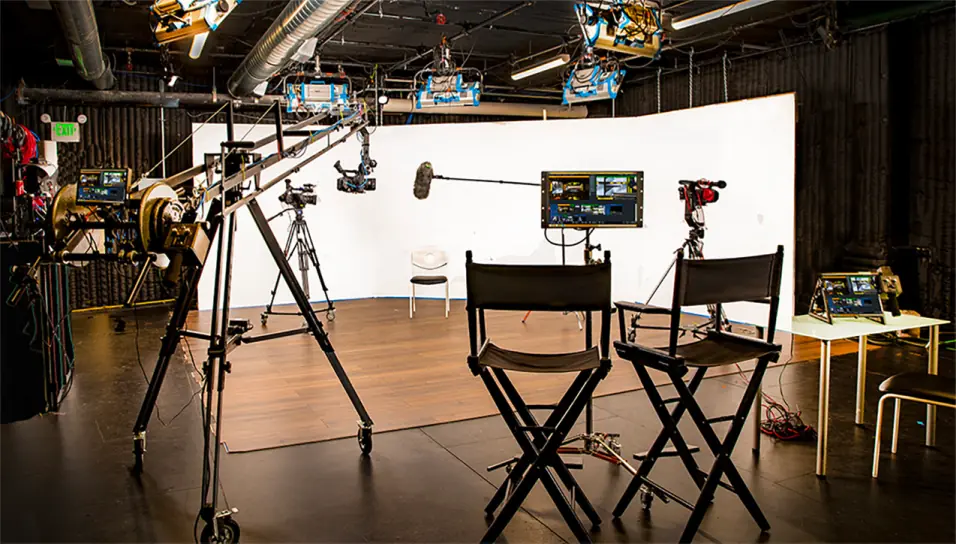
When it comes to traditional photography, you have to hire photographers and set up an environment, which is quite expensive. But you don’t have to worry about either when it comes to CGI.
Further, you don’t have to ship the product when it comes to CGI; hence, there is no risk of loss due to damage to the product compared to traditional photography.
For instance, the average cost to ship, stage, and shoot a product through photography is a whopping $3000. At House of Blue Beans, we provide content packages with an average cost of ~$600. We can create efficiencies through our reusable CGI pipeline.
Moreover, traditional photography requires you to build an entire setup to shoot lifestyle images, which again is not only time-consuming but very costly too.

However, this is not the case with CGI. Once the 3D models of products are created, the same model can be used in different digital environments. Additionally, some CGI vendors like HOBB (House of Blue Beans) already have hundreds of pre-built environments to choose from for a quick and less expensive job.
Further, at HOBB, we help you with other visual contents, such as white background images, 360 spins, lifestyle images, videos, AR/VR experiences, and more. This saves a lot of money when compared with traditional photography.
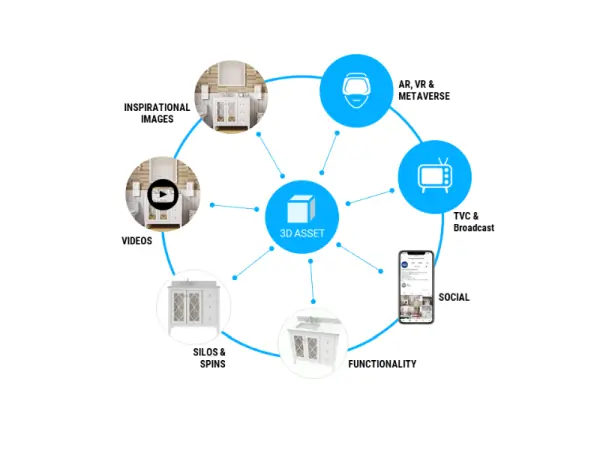
Additionally, it becomes less expensive to create visuals of a product’s variants in CGI as making adjustments and iterations are easier. On the other hand, with traditional photography, linear efforts and costs are required for the variant product visuals.

2. Scalability: CGI Is A Scalable Solution
CGI is easy and cost-effective and can be scaled to thousands of SKUs, whereas in traditional photography, the cost grows linearly and can become exorbitant. This is the reason, CGI fulfils 75% the product visuals requirement of companies like IKEA.
As discussed already, traditional photography requires setting up the environment for photoshoots. So when you have a large number of products (SKUs), it becomes very costly and time-consuming due to the manual work involved.
In CGI, the 3D model of a product is used to create all visual content and there is no dependency on setting a physical environment. This makes CGI a better choice when it comes to scalability.
For example, Target corporation was spending millions of dollars on traditional photography annually a decade ago on photography services. We helped Target set up a CGI solution that creates better quality visuals at 25% of the photography spend, thus giving them a huge advantage over rivals like Amazon and Walmart.
3. Flexibility: CGI Creates Flexibility And Versatility Across Product Categories And Channels
While the traditional photography process is built on physical components like real environments/photo studios and product prototypes, the CGI process is built on digital components like virtual environments and 3D models of products. All digital components can be made available and edited at the click of a mouse button.
One of the key advantages of CGI is the level of control it offers. With CGI, it is possible to create and manipulate objects, environments, and characters with a level of detail that would be impossible to achieve with traditional photography. This control allows for more creative freedom and flexibility in the design process.
Use Cases Of Flexibility Created By CGI
- Product variations: Colour and size variations can be visualized easily
- Variations to virtual environments can be made very easily. For example, changes to floor finish, wall colors, window positions, etc.
- Timeless flexibility: CGI enables you to pull up an image from a campaign from last year and swap out the hero product with the current product
- Flexibility across channels: Virtual sets, 3D models of products and props can be interchanged and repositioned to fit varied aspect ratios and resolutions required for different channels such as Instagram, Linkedin, Brochures, signage, eCommerce product pages, etc. While this can be done with traditional photography as well, CGI enables this for shoots/ images created in the past as well. For e.g. the social media team can pull up an image from an older campaign and edit the environment to change product or propping and re-render to a specific size based on the channel it needs to be published on.
- Creative flexibility: CGI can create a sunny day, a rainy day or a dusk shot within minutes. Traditional photography largely depends on the weather, time of day causing unexpected delays.
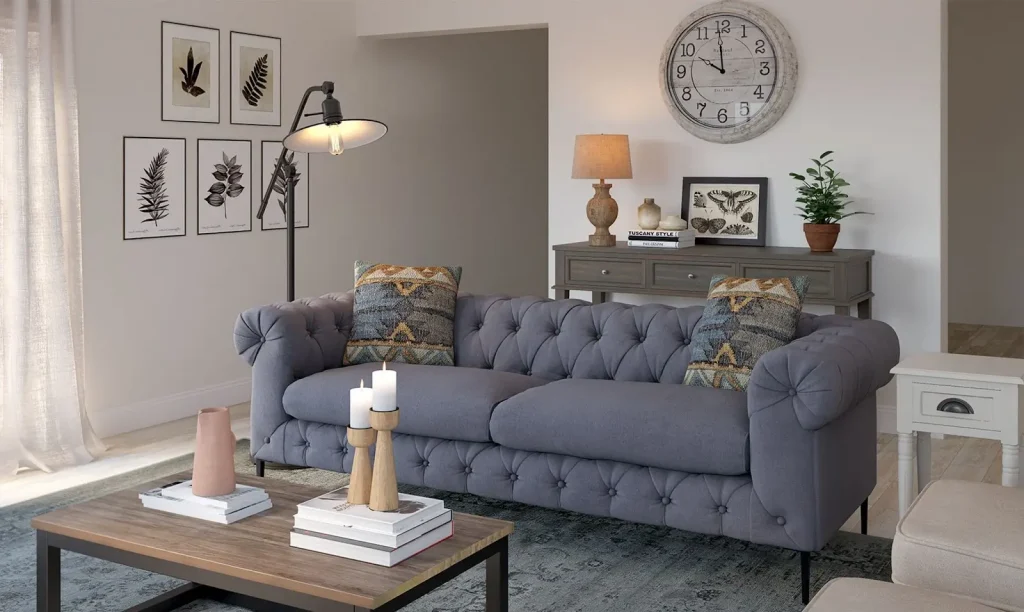
4. Time To Market: CGI Saves 70% Time To Market Versus Traditional Photography
In terms of time efficiency, CGI is a clear winner. CGI can save almost 70-80% of your go-to-market time.
Traditional photography requires the physical product to be shipped to the physical set, setting up the environment, and several other time-consuming steps.
That’s because many products are manufactured in different locations and many times in different countries. Thus, first, the product needs to be shipped to your location. The average lead time globally, to ship, stage the product and shoot through photography is 3 months—which makes it slow and a time-consuming process.
On top of that, there is often a need to reshoot images if something needs to be corrected, which can be very time-consuming.
On the other hand, CGI requires only some (phone-clicked) images of the product and its dimensions. So, it is much faster to create images using CGI.
Furthermore, with CGI, adjustments and changes can be made quickly and easily.
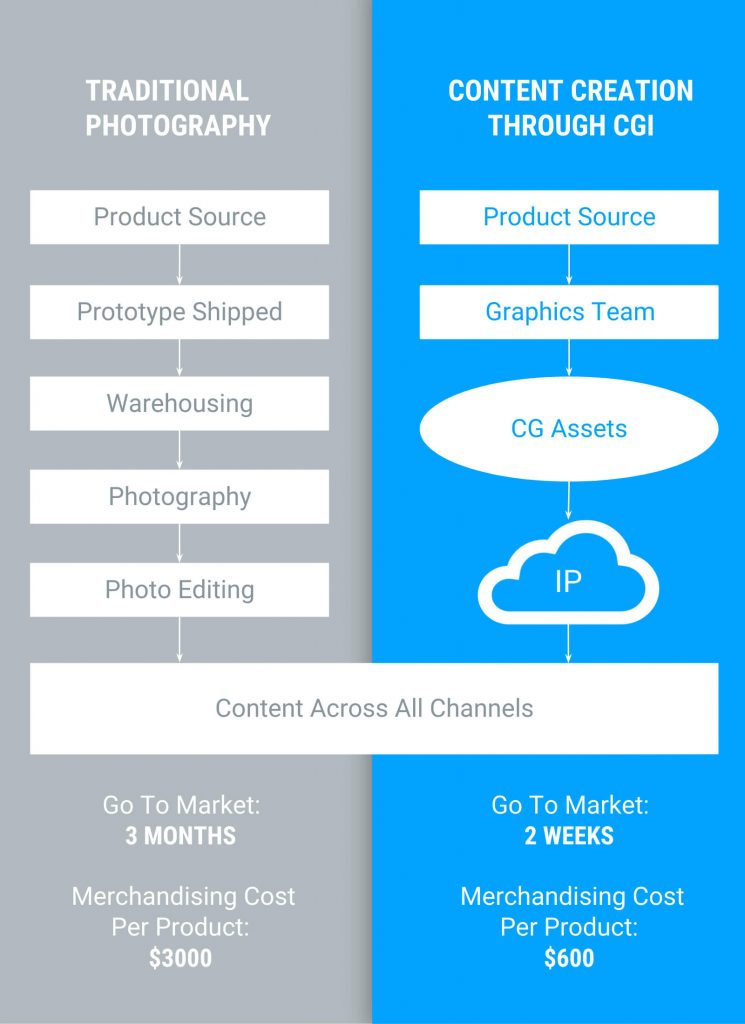
At HOBB, we do not require physical products. We work with reference images and dimensions of the product to create a 100% accurate 3D model. We have visualized and delivered ~12,000 products with an average go-to-market time of 2 weeks.
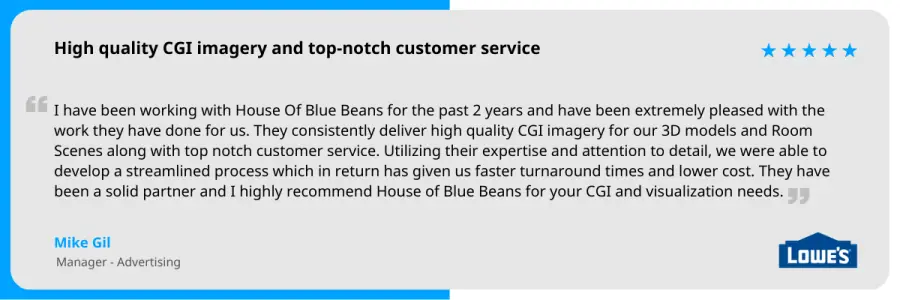
HOBB has helped a large retailer like Lowe’s home improvements create CGI product visuals for marketing purposes at a fraction of the cost of their photography cost, thereby saving money. This initiative has saved them millions of dollars over the last 4 years.
5. Quality: CGI Can Facilitate Consistency And Standardization Across Images
It’s possible to get very good quality images with CGI and traditional photography. However, in both cases, the quality depends on the vendor’s skills and expertise.
With CGI, it is possible to create images that look as if captured with a camera; however, it comes with the added benefit of being able to adjust and tweak elements as necessary. Since CGI technology is highly matured today, it has come a long way with its ability to create photorealistic images indistinguishable from photographs shot by traditional photography.
We can take certain factors into account to evaluate which one can give better output:
- Consistency: With CGI product photography, it’s easier to ensure that every product image is consistent. This can create a cohesive visual experience for your customers, helping you establish brand familiarity.
On the other hand, it’s difficult to maintain 100% consistency across a series of images created through traditional photography because of variations in environmental factors beyond control, whether lighting or an external location.
For instance, for furniture photography being done in exterior locations, it’s almost impossible to maintain consistency, impacting the final image.
Moreover, when you have a large number of products to shoot, traditional photography would take weeks or months, making it difficult to control the environmental factors.
Additionally, issues like blurriness in photos may creep in due to factors such as camera shake, camera setting, or low lighting conditions. This is not the case with CGI photographs. CGI images are sharp.
Overall, CGI images is much more predictable and consistent than traditional photography. - Precise control over the final images: CGI product photography enables total control over the lighting, angle, shadows and color—and iterations are also easier with CGI images.
In contrast, traditional photography is limited in this respect. For example, it’s difficult to maintain the color for shiny surfaces, a big issue during cosmetics or jewelry photography. Also, certain angles may not be possible. - Inherent limitations in both technologies: There are some inherent limitations of both technologies. For example, it’s not possible to create AR and VR experiences with traditional photography. You need CGI for that.
On the other hand, some images are better and looks authentic with traditional photography, like photos of people and food.
Here is a summary of which method would be better for different industries/projects:
| Industries/Projects | CGI | TP |
| Consumer electronics | Better | |
| Furniture | Better | |
| Human faces/People | Better | |
| Home decor | Better | |
| Architecture | Better | |
| Fashion and cosmetics | Better | |
| Food | Better | |
| Jewellery | Better |
Brands That Are Using CGI Solution In Place Of Traditional Photography:
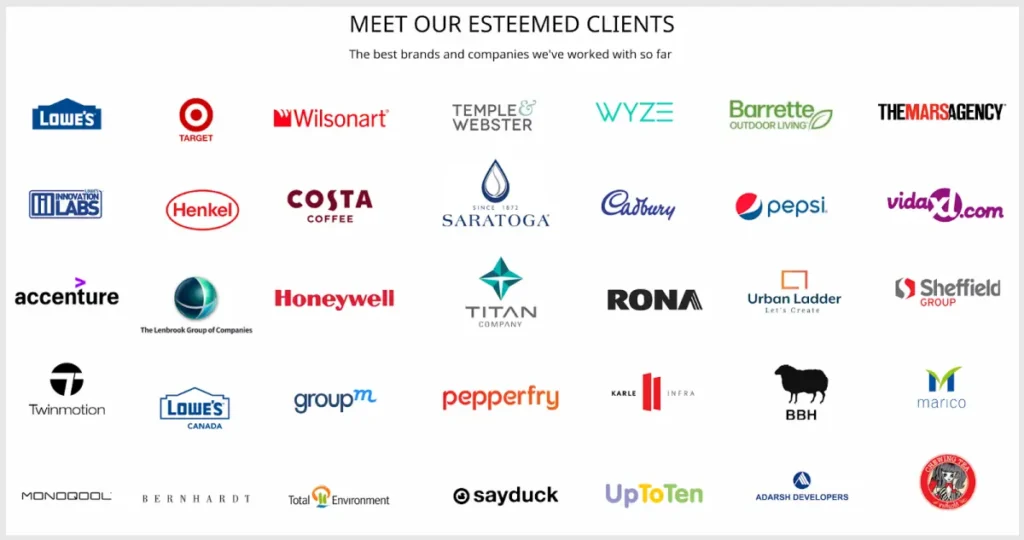
Check out some of our customer reviews:
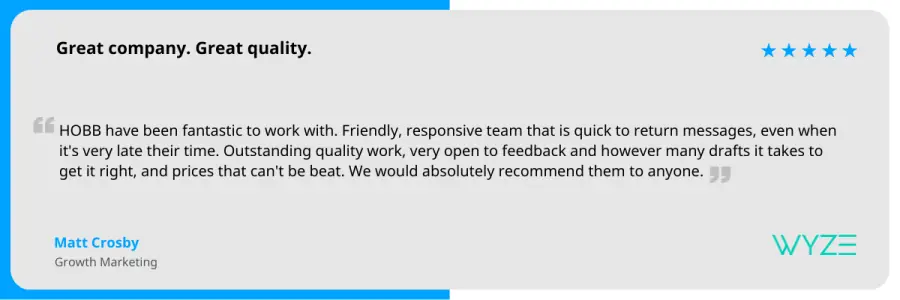
6. Convenience
Due to the flexibility that CGI offers, it has always been more convenient than traditional photography. Whether you want a change to the environment or lighting, or shadows, it’s easier in the case of CGI.
On the other hand, traditional photography with a camera requires you to make changes to the setup physically.
Therefore, making iterations and testing different ideas is quick and hassle-free with CGI.
Furthermore, you can work with a CGI agency, like House of Blue Beans (HOBB) remotely to get the images—all while sitting in your AC room, without the need of shipping products or visiting any location.
At HOBB, we just need a couple of inputs to get started.
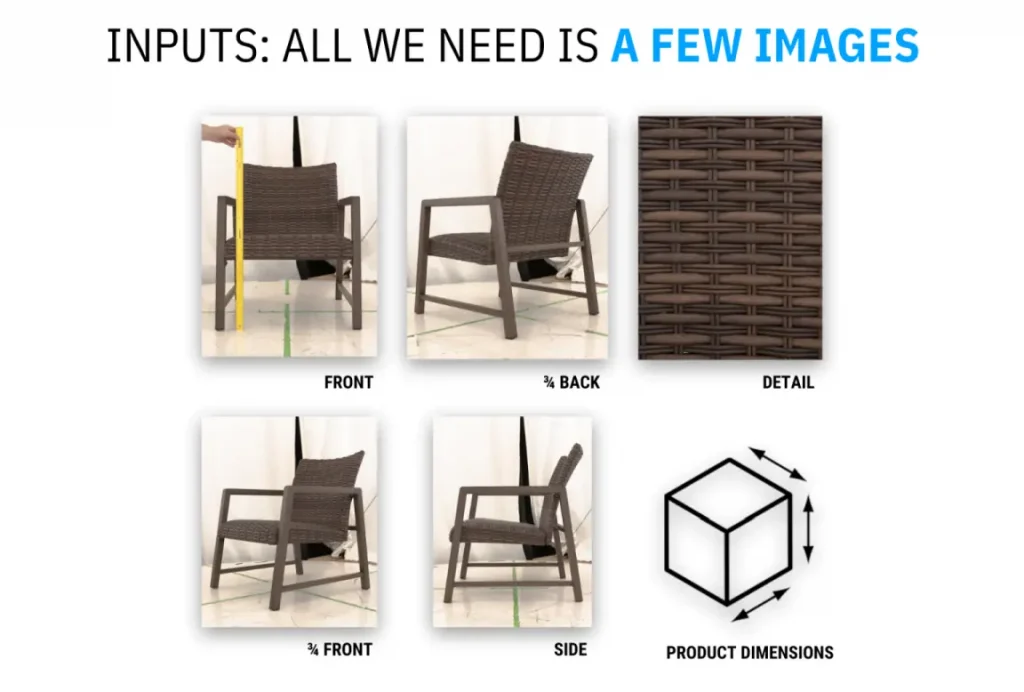
As you can imagine, when you have a tight deadline, photography would be a headache. There would be a lot of things to do in a short amount of time:
- source the product,
- store the product in warehouse,
- hire a photographer,
- ship the products to the shoot location,
- setup the environment, and
- pick the products back.
Not to mention, you have to repeat these steps in case images are not of good quality.
7. Capital Investment: Investment In CGI Future-Proofs The Enterprise For New-Age Consumer Experiences Like AR & VR
Traditional photography requires significant investment in terms of acquiring or leasing studio space. The real estate also needs to cater to a large warehousing facility to store all the products and props. Additionally, there will be investment into camera, lighting and staging equipment and a highly skilled photography team.
Unfortunately, this capital investment does not future proof the enterprise for new age consumer experiences such as Augmented & virtual reality experiences.
CGI on the other hand requires an investment to create the 3D models of the products and the virtual environment templates in alignment with the brand guidelines. In an a head to head cost comparison, CGI provides a large cost saving after taking into consideration the capital investment needed.
The capital investment into creating 3D models can be directly leveraged to create new age consumer experiences such as Augmented & virtual reality experiences.
For example, when working with Lowe’s, we at HOBB learned they had 35,000 products in their inventory. All 3D models created for the marketing team are being used by the IT team to create AR & VR experiences at scale. HOBB has created ~7,000 3D models for Lowe’s to use in AR & VR experiences.
8. Shoots With Talent/Real People
Though CGI has a lot of advantages when compared with traditional photography but there are few cases in which photography is preferred. For instance, when it comes to photo shoots of real people, photography looks a better option to display authenticity. Further, when you need in-person experience and to give real-time feedback, photography is preferred as you can quickly ask for changes in small details such as angel and avoid time spend in to-and-fro communication.
How To Choose Between CGI Or Traditional Photography For Your Next Project
In most cases, CGI beats traditional photography for commercial use case because of cost-efficiency, scalability, flexibility, shorter go-to-market period, better quality and convenience.
Whatever you choose—CGI product photography or traditional photography—there is a lot of hassle involved in finding the right service provider. So, it’s better to check their track record.
Checking whom they have worked with can help you make a quick decision. If a well known brand has worked with them, you can expect they would have already done a lot of due diligence, and you can piggyback on the same research.
For example, one of the reasons why many of our own customers have chosen us was because of our track record of working with brands like Lowe’s and Target.
They have been working with us for years now. Though a brand like Target has access to all the expensive Hollywood studios and they choose to work with us because of our quality work and ability to meet tight deadlines.
Check what the Director of Lowe’s Advertising Services has to say about HOBB.
